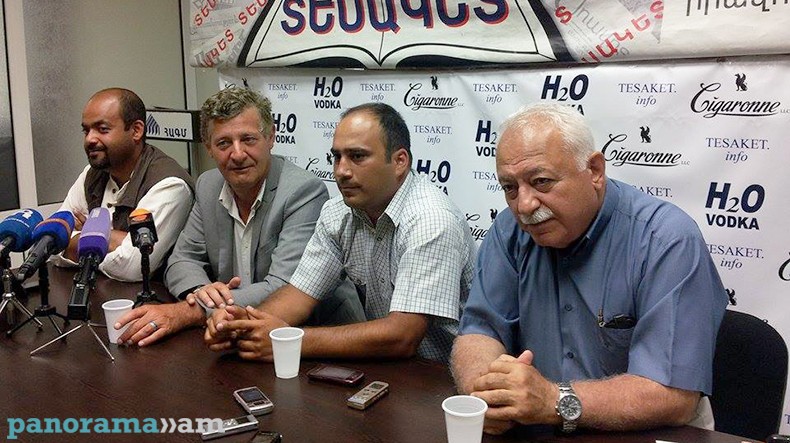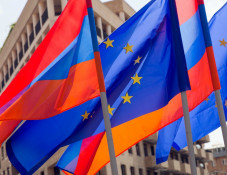
Yerevan’s oldest street discovered during excavations
The 8 years of excavations by the Armenian-French expedition team have shown some interesting results, director of Erebuni Historical and Archaeological Museum-Reserve, Gagik Gyurjyan said during a press conference.
Mr. Gyurjyan informed that the excavations, which started in 2008 in Erebuni, were funded by the French Foreign Ministry.
“These excavations have solved serious problems: archaeologists were able to come up with their research, their scientific discoveries and we’ve been able to cooperate with French archaeologists. However, the most important issue at this point is preparing for the 2800th anniversary of Erebuni-Yerevan. Certain renovations should be carried out until 2018,” he said.
He underlined the fact that Iranian archaeologists also participated in the excavations.
According to head of the Armenian group, Michael Badalyan, these excavations offered answers to a number of questions yet they also raised new ones.
Mr. Badalyan noted that during the excavations they were focused on post-Urartian period. “We keep speaking about the Urartu period, its history, architecture then we speak about the Achaemenid period. Urartu disappeared in 640’s BC. The Achaemenid Empire was found in mid-6th century BC. We don’t know anything about the gap. The results of the Armenian-French expedition provide information about this particular period”.
According to Michael Badalyan, since the Soviet era there were rumours about a pillared hall, which is considered to be a part of a temple dedicated to God Khaldi.
“These excavations prove that the temple was built during post-Urartian period. It resembles the Moorish monuments. It also resembles the pillared hall of Godin Tepe situated in Iran,” he said.
The archaeologist also said that the excavations were mainly carried out in the Temple of God Khaldi and its surroundings. A pebbly street has been discovered to the East of the temple. It is about 30 meters long. “If we believe Erebuni to be the cradle of our capital city of Yerevan, we may say that we’ve found the oldest street of the city”.
“It can reveal new information about an important period in the history of Erebuni. Some signs of earthquake have also been observed. We’ve invited both Armenian and French specialists who confirmed those signs. According to our observations, the earthquake occurred in mid-7th century. Although still a hypothesis, this is an important factor, which allows us to say why the fortress of Teishebaini was built. Perhaps it was because of this earthquake that Rusa II decided to move,” Mr. Badalyan said.
During the excavations, stone foundations were discovered. The archaeologist doesn’t rule out the fact that there was once a building of great importance. According to Mr. Badalyan, there could be a worship complex, which was common in the Old Middle East.
Head of Paris Archaeological Service, Stéphane Deschamps, noted that the excavations are significant not only in terms of archaeology, but also for restoring and recreating Erebuni. “These excavations are a good basis for such kind of work”.
Representative of the Iranian team, Reza Heydari noted that these excavations are an important cultural cooperation for both Armenia and Iran. “The excavations in Erebuni are very important. They shed light on the studies of the Moorish period”.
Newsfeed
Videos






























